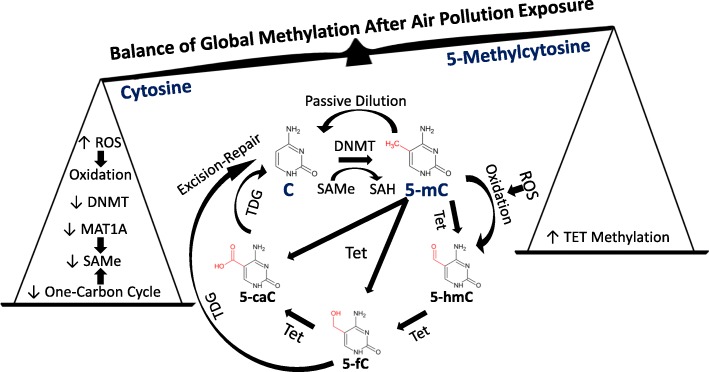Fig. 1.
Air pollution-associated effects that may modulate global DNA methylation. Cytosines (C) in CpG sites may be methylated to 5-methylcytosine (5-mC). Ten-eleven translocation methylcytosine dioxygenase (TET) family members can catalyze DNA demethylation through converting 5-mC to 5-hydroxymethylcytosine (5-hmC), 5-formylcytosine (5-fC), and 5-carboxycyotosine (5-caC). G/T mismatch-specific thymine-DNA glycosylase (TDG) may as part of mismatch excision repair processes excise 5-fC or 5-caC and restore a C. Alternatively, 5-mC may undergo passive dilution and revert to C during mitosis. Numerous factors could affect the balance of cytosine (C) and 5-methylcytosine (5-mC) at CpGs throughout the genome following air pollution exposure. Air pollution-induced reactive oxygen species (ROS) may increase oxidation of 5-mC to 5-hydroxymethylcytosine (5-hmC). Global generation of 5-mC may also be decreased by air pollution-induced reductions in DNA methyltransferase (DNMT) expression. Additionally, expression of methionine adenosyltransferase 1A (MAT1A) and activity of the one-carbon cycle may be lower, leading to reduced production of the methyl donor S-adenosyl methionine (SAMe) and subsequently 5-mC. Conversely, TET DNA methylation may reduce expression and subsequently decrease TET activity, which could contribute to maintaining 5-mC

